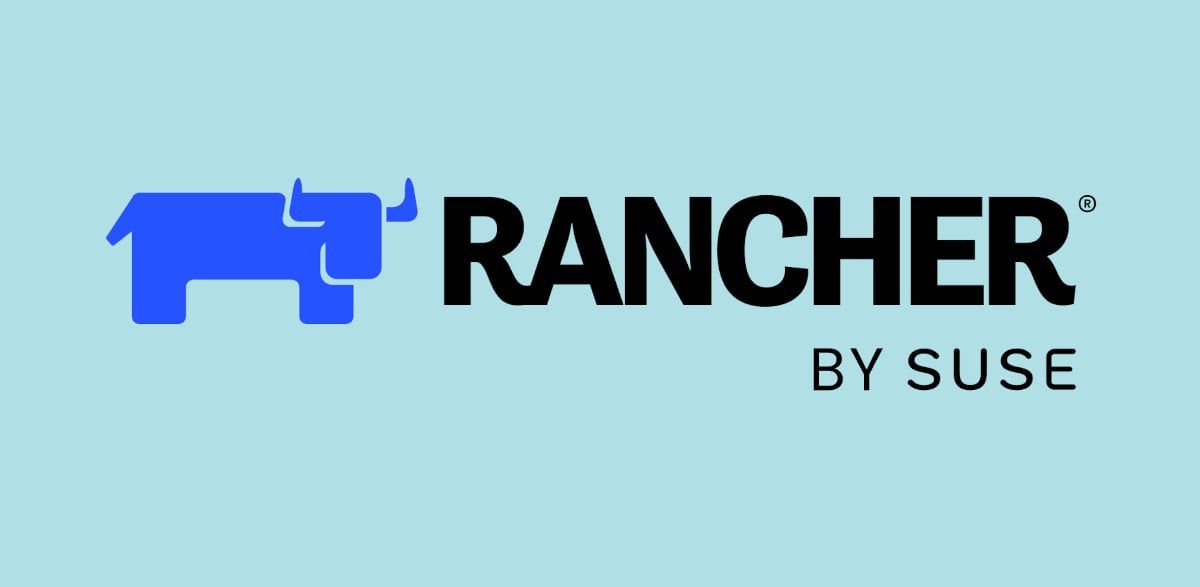Can Rancher Deliver on Making Kubernetes Easy?
Over the past few years, Kubernetes has become increasingly difficult to deploy. When you couple that with the idea that Kubernetes itself can be a challenge to learn, you have the makings of a system that could have everyone jumping ship for the likes of Docker Swarm.
I’m always on the lookout for easier methods of deploying Kubernetes for development purposes. I’ve talked extensively about Portainer (which I still believe is the best UI for container management) and have covered other Kubernetes tools, such as another favorite, MicroK8s.
Recently, I’ve started exploring Rancher, a tool that hasn’t (for whatever reason) been on my radar to this point. The time for ignoring the tool is over and my initial experience so far has been, shall I say, disappointing. One would expect a tool with a solid reputation for interacting with Kubernetes to be easy to deploy and use. After all, the official Rancher website makes it clear it is “Kubernetes made simple.” But does it follow through with that promise?
Not exactly.
Let me explain by way of walking you through the installation and the first steps of both Rancher on a server and the Rancher Desktop app.
I’m going to show you how I attempted to deploy Rancher on Ubuntu Server 22.04.
Installing Rancher on Ubuntu Server 22.04
Before you dive into this, there’s one very important thing you need to know. Installing Rancher this way does not automatically give you a Kubernetes cluster. In fact, you actually need a Kubernetes cluster already running. This is only a web-based GUI. And even then, it can be problematic.
The first step to installing Rancher on Ubuntu Server is to log into your Ubuntu server instance. That server must have a regular user configured with sudo privileges and a minimum of 2 CPU Core and 4 GB RAM.
Once you’ve logged in, you must first install a few dependencies with the command:
sudo apt-get install apt-transport-https ca-certificates curl gnupg lsb-release -y 1 sudo apt - get install apt - transport - https ca - certificates curl gnupg lsb - release - y
Next, add the necessary GPG key with:
curl -fsSL https://download.docker.com/linux/ubuntu/gpg | sudo gpg --dearmor -o /usr/share/keyrings/docker-archive-keyring.gpg 1 curl - fsSL https : //download.docker.com/linux/ubuntu/gpg | sudo gpg --dearmor -o /usr/share/keyrings/docker-archive-keyring.gpg
Add the official Docker repository:
echo "deb [arch=amd64 signed-by=/usr/share/keyrings/docker-archive-keyring.gpg] && https://download.docker.com/linux/ubuntu $(lsb_release -cs) stable" | sudo tee /etc/apt/sources.list.d/docker.list > /dev/null 1 2 3 echo "deb [arch=amd64 signed-by=/usr/share/keyrings/docker-archive-keyring.gpg] && https://download.docker.com/linux/ubuntu $(lsb_release -cs) stable" | sudo tee / etc / apt / sources . list . d / docker . list > / dev / null
Update apt with:
sudo apt-get update 1 sudo apt - get update
Install the latest version of the Docker CE runtime engine:
sudo apt-get install docker-ce docker-ce-cli containerd.io -y 1 sudo apt - get install docker - ce docker - ce - cli containerd . io - y
Add your user to the docker group with the command:
sudo usermod -aG docker $USER 1 sudo usermod - aG docker $ USER
Finally, log out and log back in for the changes to take effect.
Deploy Rancher
Now that Docker is installed, you can deploy Rancher with:
docker run -d --name=rancher-server --restart=unless-stopped -p 80:80 -p 443:443 --privileged rancher/rancher:v2.4.18 1 docker run - d -- name = rancher - server -- restart = unless - stopped - p 80 : 80 - p 443 : 443 -- privileged rancher / rancher : v2 . 4.18
An older version of Rancher must be used because the latest version fails to start.
The deployment will take some time to complete. When it does open a web browser and point it to http://SERVER (where SERVER is the IP address of the hosting server). You’ll be greeted by the welcome screen, where you must set a password for the admin user (Figure 1).
In the next window (Figure 2), you must set the Rancher Server URL. If you’ll be using an IP address, leave it as is. If you’ll use a domain, change the entry and click Save URL.
You will then be prompted to add a cluster (Figure 3). If your cluster is in-house, select “From existing nodes”. If you’ll be using a cluster from a third party, select the service.
In the resulting window (Figure 4), fill out the necessary details and configure the cluster as needed. At the bottom of the window, click Next.
You will then be given a command to run on your Kubernetes cluster (Figure 5).
After the command completes on the Kubernetes server, click Done.
At this point, the cluster should register with Rancher. “Should” being the operative term. Unfortunately, even though my Kubernetes cluster was running properly, the registration never succeeded. Even though the new node was listed in the Nodes section, the registration hadn’t been completed after twenty minutes. This could be because my Kubernetes cluster is currently being pushed to its limits. Because of that, I rebooted every machine in the cluster and tried again.
No luck.
My guess is the problem with my setup is the Kubernetes cluster was deployed with MicroK8s and Rancher doesn’t play well with that system. Although you can deploy Rancher with MicroK8s, Helm, and a few other tools, that process is quite challenging.
I decided to bypass deploying Rancher on Ubuntu Server and went straight to Rancher Desktop. After all, Rancher Desktop is supposed to be similar to Docker Desktop, only with a Kubernetes backend.
Here’s the process of installing Rancher Desktop on Pop!_OS Linux:
First, check to make sure you have kvm privileges with the command [ -r /dev/kvm ] && [ -w /dev/kvm ] || echo ‘insufficient privileges’ Generate a GPG key with gpg –generate-key Copy your GPG key and add it to the command pass init KEY (where KEY is your GPG key) Allow Traefik to listen on port 80 with sudo sysctl -w net.ipv4.ip_unprivileged_port_start=80 Add the Rancher GPG key with the command curl -s https://download.opensuse.org/repositories/isv:/Rancher:/stable/deb/Release.key | gpg –dearmor | sudo dd status=none of=/usr/share/keyrings/isv-rancher-stable-archive-keyring.gpg Add the official Rancher repository with echo ‘deb [signed-by=/usr/share/keyrings/isv-rancher-stable-archive-keyring.gpg] https://download.opensuse.org/repositories/isv:/Rancher:/stable/deb/ ./’ | sudo dd status=none of=/etc/apt/sources.list.d/isv-rancher-stable.list Update apt with the command sudo apt update Install Rancher Desktop with sudo apt install rancher-desktop -y
Launch Rancher Desktop from your desktop menu and accept the default PATH configuration (Figure 6).
Rancher Desktop will then download and start the necessary software to run. Once that completes, you’ll find yourself on the Welcome to Rancher Desktop window (Figure 7).
Here’s where things take a turn for the confusing. With Rancher Desktop, the only things you can actually do are manage port forwarding, pull and build images, scan images for vulnerabilities (which is a very handy feature), and troubleshot. What you cannot do is deploy containers.
To do that, you have to revert to the command line using the nerdctl command which, oddly enough, isn’t installed along with Rancher Desktop on Linux. I did run a test by installing Rancher Desktop on macOS and found that nerdctl was successfully installed, leading me to believe this is a Linux issue. Another thing to keep in mind is that the macOS installation of Rancher Desktop is considerably easier. However, it suffers from the same usability issues as it does on Linux.
If you’d like to keep experimenting with Rancher Desktop, you’ll need to get up to speed with nerdctl which I demonstrated here.
You can also build an image with Rancher Desktop, by clicking Images > Add Image and then clicking the Build tab. Give your image a name and click Build. You then must select a build directory. What it doesn’t tell you is that the build directory must contain a proper Docker file. With the Docker file in place, the image will build.
Maybe the GUI should key users in on that fact.
Once the image is built, you should be good to go to deploy a container based on that image. Right? Not within Rancher Desktop you can’t. Instead, you have to go back to the terminal window and deploy the container with the nerdctl command.
How is any of this Kubernetes made simple? It’s not. If you want Kubernetes made simple, you go with the MicroK8s/Portainer combo and call it a day.
From my perspective, if you’re going to claim that your product makes Kubernetes simple (which is a big promise, to begin with), you shouldn’t require users to jump through so many hoops to reach a point where they can successfully work with the container management platform. Simple is a word too many companies use these days but fail to deliver on.
Source: The New Stack


